Estimated reading time 19 minutes, 37 seconds.
The National Business Aviation Association (NBAA) is celebrating its 70th anniversary in Las Vegas, Nev., this year, where once again thousands of business aviation professionals are gathering for the organization’s annual flagship Business Aviation Convention and Exhibition (BACE).
This year’s show is running from Oct. 10 to 12, 2017, and takes place while Las Vegas mourns the losses from the tragic mass shooting of Oct. 1.
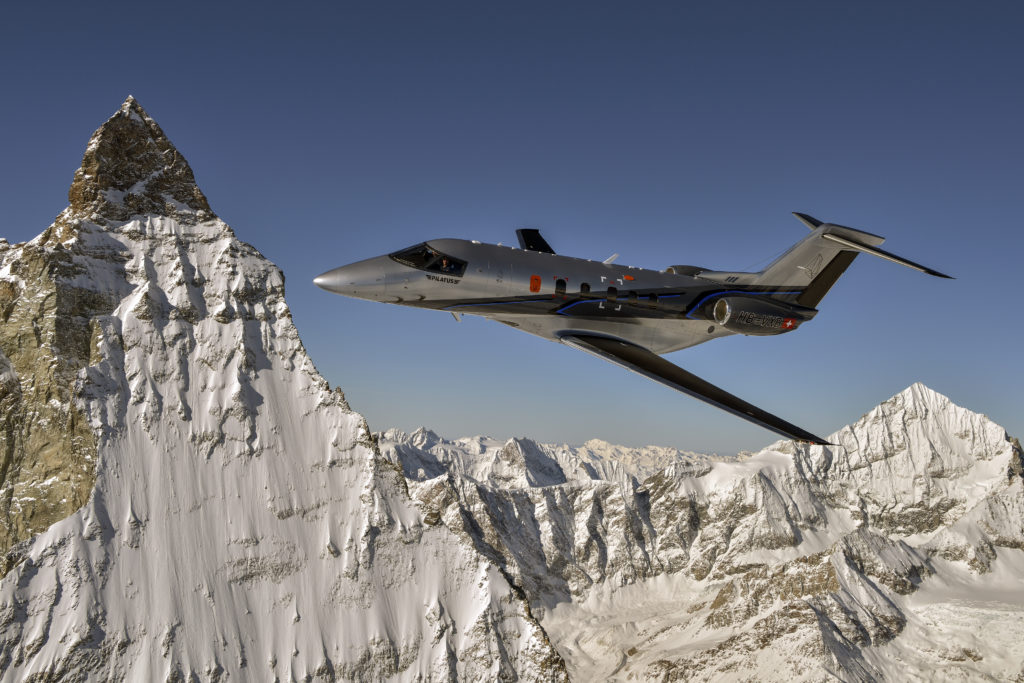
Ed Bolen, president and CEO of NBAA, said the horrific event presents a “huge opportunity and a tremendous responsibility” for business aviation, as NBAA-BACE is the first city-wide conference to take place following the attack.
“We recognize that there is a great deal of heartbreak in this city, but we also know Las Vegas is strong and the business aviation community is uniquely positioned to make its size and significance felt within the community, and we’ll be doing that in a multitude of ways,” he said in a video posted on the NBAA website.
Meanwhile, while the mood was undoubtedly more somber than usual on the eve of the show, OEMs hosted the customary series of press conferences on Oct. 9 at the Las Vegas Convention Center.
Many business jet manufacturers used the opportunity to provide program updates or share new product information. Here’s a round-up from the day:
Markus Bucher, CEO of Pilatus Aircraft Ltd., told members of the media that the much-anticipated new PC-24 twinjet is now at the end of the development program, with certification expected by the end of this year.
“As of this week, we have the last review from EASA and from there onwards, we’re in the final phases of certification,” said Bucher. “We are on track. We always said we would certify in 2017 and we will achieve that goal; we intend to hand over the first PC-24 to the customer by the end of this year.”

After more than two years of flight testing, the three PC-24 test aircraft have together flown more than 2,000 hours on a total of 1,251 flights. Evaluation flights have taken place all over the world, with most of them being in Spain and the U.S. Bucher said the second aircraft, P02, will be displayed at the convention centre in the indoor static display.
Meanwhile, production is ramping up at the Pilatus factory in Stans, Switzerland, where the PC-24 is undergoing intense system integration testing. The first aircraft will be delivered to U.S. fractional ownership company PlaneSense.
Bucher said FlightSafety will be ready with pilot and maintenance training programs when type certification is achieved. The OEM has also established 24/7/365 customer support by combining PC-12 and PC-24 support teams.
The PC-12 NG continues to be a popular offering, said Bucher, with the 1,500th aircraft delivered this past summer to the Royal Flying Doctor Service of Australia. The type has achieved 6.5 million reliable flying hours, with 85 aircraft delivered this year.
“We have every intention to remain the market leader in this segment,” said Bucher, noting that Pilatus has invested in machining, facilities and its workforce to remain at the top of its game.
A new facility will open in Colorado in mid-2018, with one third of Pilatus’ business being conducted in the U.S.
What’s next for the Swiss OEM?
“We need to consolidate for the next couple of years,” said Bucher. “We’ve had huge growth. We need to digest that growth. We need to be efficient and optimize processes, and we need to make sure we make particular investments into specific processes.”
With a current backlog of 84 PC-24s, Pilatus wants to ensure it can deliver to customer expectations before it begins taking more orders for the new twinjet.
Another program that has made great strides during the past year is Honda Aircraft Company’s HondaJet. With 58 aircraft in service racking up 10,000 total flight hours, the new jet was the most delivered aircraft in its class for the first half of 2017.
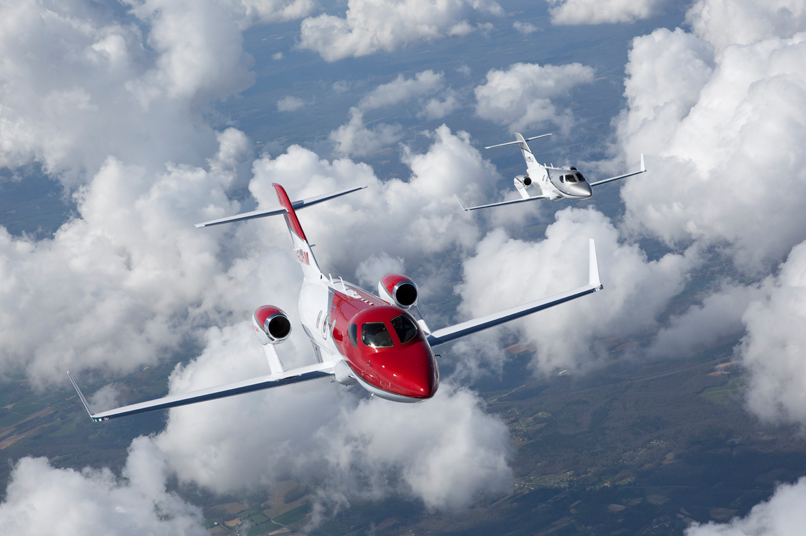
Honda Aircraft president and CEO, Michimasa Fujino, said customer reaction to the distinctive jet has been outstanding.
“We are at a very exciting chapter of the HondaJet story. Customers have shared that the HondaJet exceeds their expectations,” he said during a press conference on Oct. 9.
With best-in-class technology, including the Garmin G3000 avionics suite, its distinctive over-the-wing engine mount (OTWEM), and a hybrid composite fuselage, Fujino said the HondaJet has proven it can deliver high performance, efficiency, comfort and quality.
Members of the media also heard from Julian and Kim MacQueen, HondaJet owners who flew their aircraft around the world, setting five speed records, transiting 26 countries, and logging 80 flight hours. The couple shared their story, describing how the HondaJet’s range allowed them to fly comfortable three-hour legs on their journey.
Fujino said the HondaJet has received tremendous interested in China, and announced that the company had selected a new Chinese dealer, Guangzhou-based Honsan General Aviation. The company will deliver sales, service and support throughout China, Hong Kong and Macau.
In August, Honda Aircraft formally submitted an application for HondaJet certification in China, which Fujino said will take at least a year to obtain.
Bombardier is focusing on delivering industry-leading service with its new cost-per-hour Smart Services program. Building on the success of its Smart Parts program, launched in 1986, the OEM continues to hone its aftermarket solutions, opening the Smart Services program to existing as well as new business jet customers.
“We intentionally designed this offering to be fully flexible and bespoke based on feedback from our customers,” said Jean-Christophe Gallagher, vice-president and general manager of customer experience at Bombardier. “The new Smart Services offering allows our customers to tailor their cost-per-flight hour program to their needs.”
Bombardier has also expanded its service network in recent years, with additional line stations in Europe and new service centre facilities in Tianjin, China, and Biggin Hill, London.
A new centre of excellence in Tucson, Ariz., will focus on big interior refurbishment jobs, while the overall aftermarket service and support network company-wide has expanded to 3,000 staff including 82 field service representatives.
A new maintenance control centre in Wichita, Kan., will coordinate maintenance requests around the clock across North America.
Gallagher said staff recruitment remains a challenge, particularly in avionics. Bombardier continues to partner with local colleges, investing in the training of its future workforce.
Bombardier’s fourth Global 7000 flight test vehicle will be on the static display, featuring a fully equipped interior comprised of four distinct living areas. The Canadian OEM said the program is on track, with entry into service expected in the second half of 2018.
Dassault Aviation presented an update on its flagship Falcon 8X program, which chairman and CEO Eric Trappier said has enjoyed a “flawless market introduction” and has currently been delivered to operators in 14 countries.
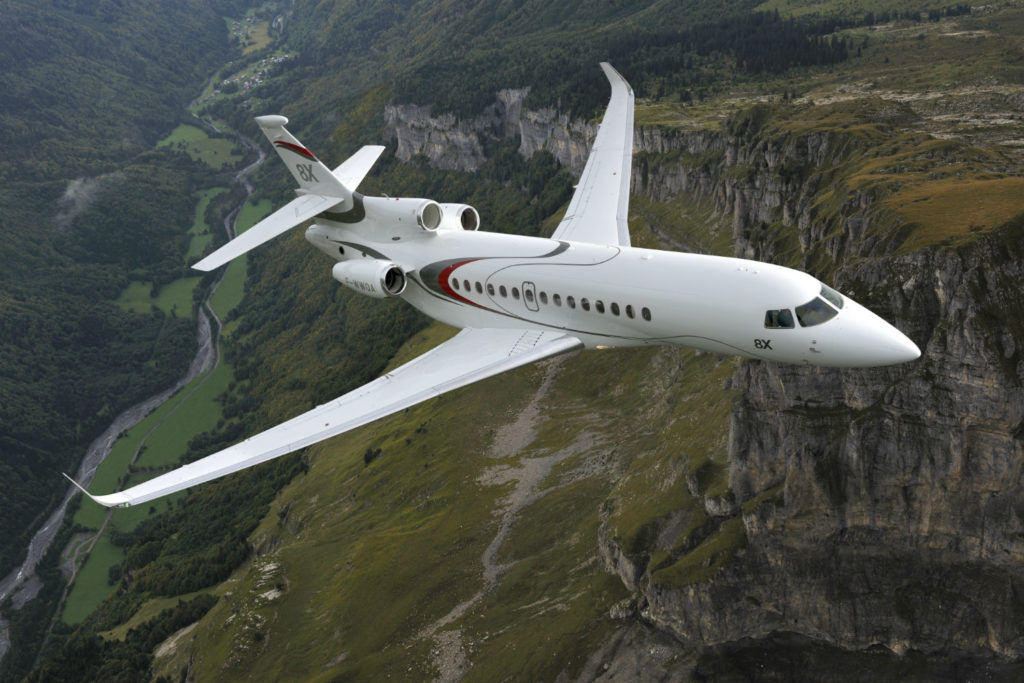
The OEM has designed a virtual reality tool that helps owners envision the various possible cabin layouts, including a shower option that is coming soon.
With an over-supply of used business jets for sale, Trappier said the market remains difficult, although the U.S., Europe and Asia show promise.
Dassault’s military aviation branch helps offset slower business jet sales, and often leads in the development of technology that can be carried over to the business aviation world. One such product is the early stage work being done on artificial intelligence and the creation of a “digital co-pilot” on a business jet.
One cloud on the horizon is the fact that engine manufacturer Safran is experiencing serious “performance” issues related to the high pressure compressor on the Silvercrest engine, which powers the twinjet Falcon 5X.
Trappier said this will once again delay flight validation and certification tests on the aircraft, which first flew in July 2017 using a preliminary version of the Safran engine.
A Safran representative in the audience, who was called upon to comment, said the problem has to do with the efficiency of the high pressure compressor, resulting in a lack of responsiveness in acceleration and deceleration. However, he said the company is “absolutely committed” to delivering the right engine to Dassault and that the Silvercrest engine will meet requirements.
Investment and innovation continue to be the name of the game over at Textron Aviation.
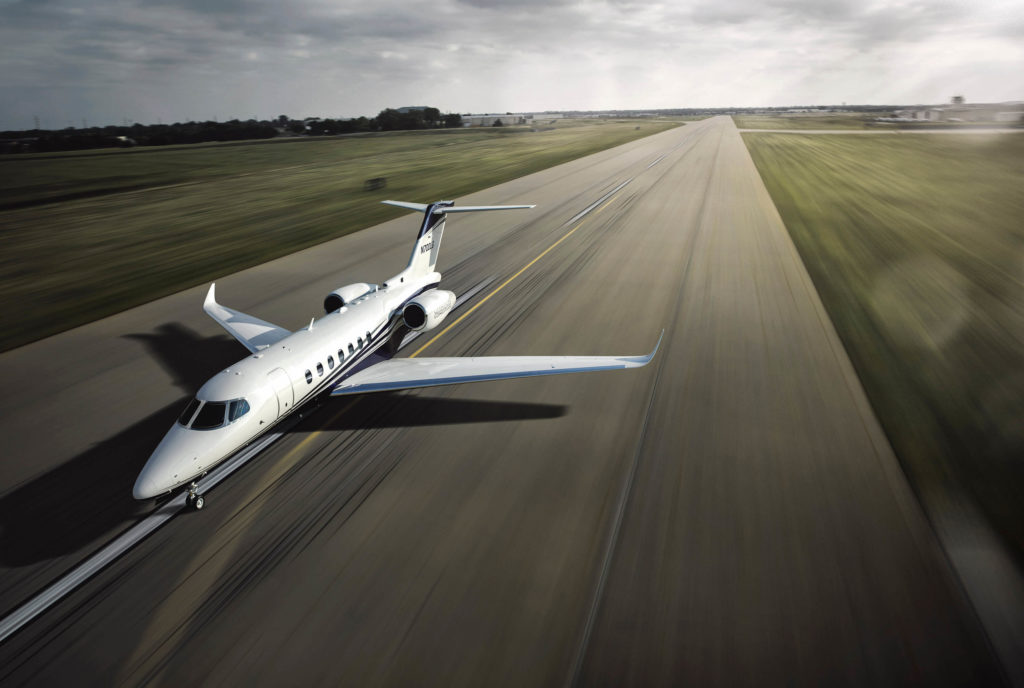
Company president and CEO, Scott Ernest, said Textron’s diversified product family includes a number of planes currently in various stages of the certification process, including the Citation Longitude, Citation Hemisphere, Denali and military light attack Scorpion aircraft.
Ernest said the focus is on creating the “factory of the future” by investing into the manufacturing process to ensure repeatability in processes.
Brad Thress, Textron Aviation’s senior vice-president of engineering, said Longitude speed, range and weight targets confirm the aircraft as the “best flying Citation we’ve ever made.”
With the longest maintenance intervals in its class, Thress said the Longitude has flown more than 600 flights, logging in excess of 1,200 flight hours to date. The aircraft will begin a U.S. tour on Nov. 1.
Wind tunnel testing has been completed on the larger $35-million Hemisphere, and several test articles are in the works on the Denali program. First flight for the latter $4.8-million single-engine turboprop is expected in late 2018.
Textron said it remains confident in the Safran Silvercrest engine, which is also set to power the Hemisphere, adding that the kinks should be worked out by the time the Hemisphere is ready to fly.
Savannah, Ga.-based Gulfstream Aerospace announced that its long-range G500 and G600 programs have exceeded expectations during flight testing. As a result, the manufacturer announced new performance standards for both aircraft.
Upon entry into service, the G600 will deliver 6,500 nautical miles/12,038 kilometres of range at Mach 0.85, 300 nm/556 km farther than the initially promised range of 6,200 nm/11,482 km. At its high-speed cruise of Mach 0.90, the aircraft will fly 5,100 nm/9,445 km, an increase of 300 nm/556 km over original projections.
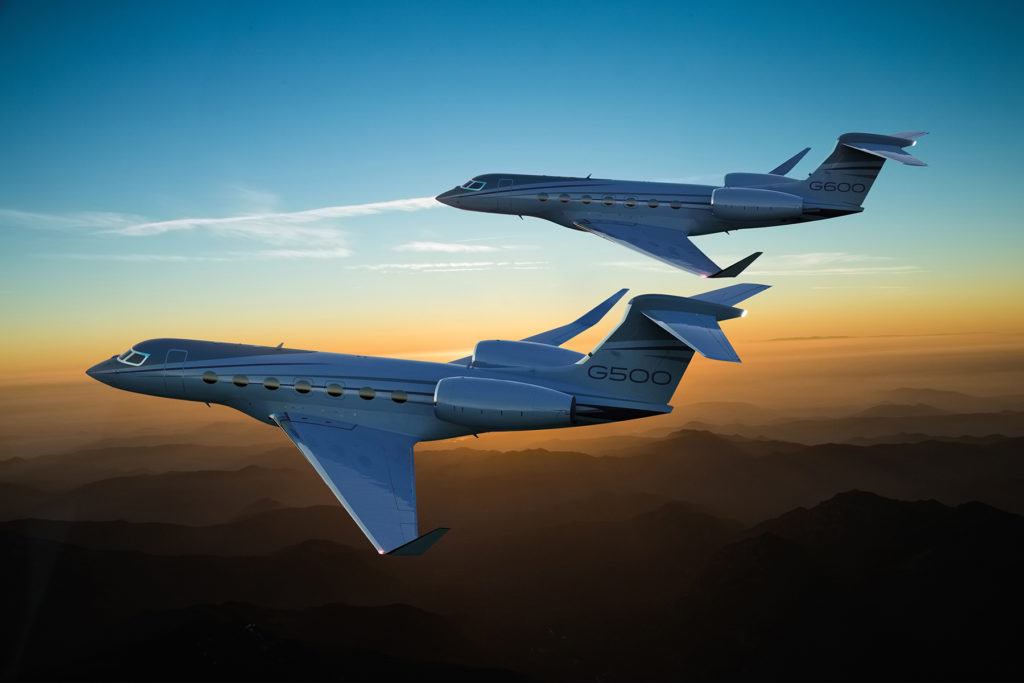
The G500 can fly 5,200 nm/9,630 km at its long-range cruise speed of Mach 0.85, providing operators even greater mission flexibility over the aircraft’s original 5,000-nm/9,260-km range. At its high-speed cruise of Mach 0.90, the G500 will offer 4,400 nm/8,149 km of range, a 600-nm/1,111-km increase over its projected range of 3,800 nm/7,038 km.
“As we methodically moved through our concurrent flight-test programs, which are going exceptionally well, we recognized we had both the time and ability to enhance G500 and G600 performance and give our customers a business-jet family that’s better than the one we had promised them,” said Mark Burns, president of Gulfstream.
Now in Las Vegas, both the G500 and G600–with fully outfitted interiors–will be part of the Gulfstream NBAA-BACE static display at Henderson Executive Airport.
Powered by twin Pratt & Whitney Canada PW800-series engines, the G500 and G600 have a maximum operating speed of Mach 0.925 — the same as Gulfstream’s G650 and flagship G650ER.
The G500 is set for delivery in 2018, while the G600 is also slated for entry into service next year.
Gulfstream also plans to use immersive reality tools to enhance interior design planning and maintenance training.
To enhance its service offering, the company announced it will build a new 43,200-square-foot/4,013-square-metre maintenance facility at Van Nuys Airport near Los Angeles and establish a Field and Airborne Support Team (FAST) unit in the Boston area.
Embraer unveiled its newest business jet, the Phenom 300E, and announced enhancements to its Legacy 450 and Legacy 500 aircraft.
The new aircraft is designated “E” for “Enhanced,” in reference to its entirely redesigned cabin and the addition of the nice HD cabin management system/in-flight entertainment (CMS/IFE) by Lufthansa Technik.
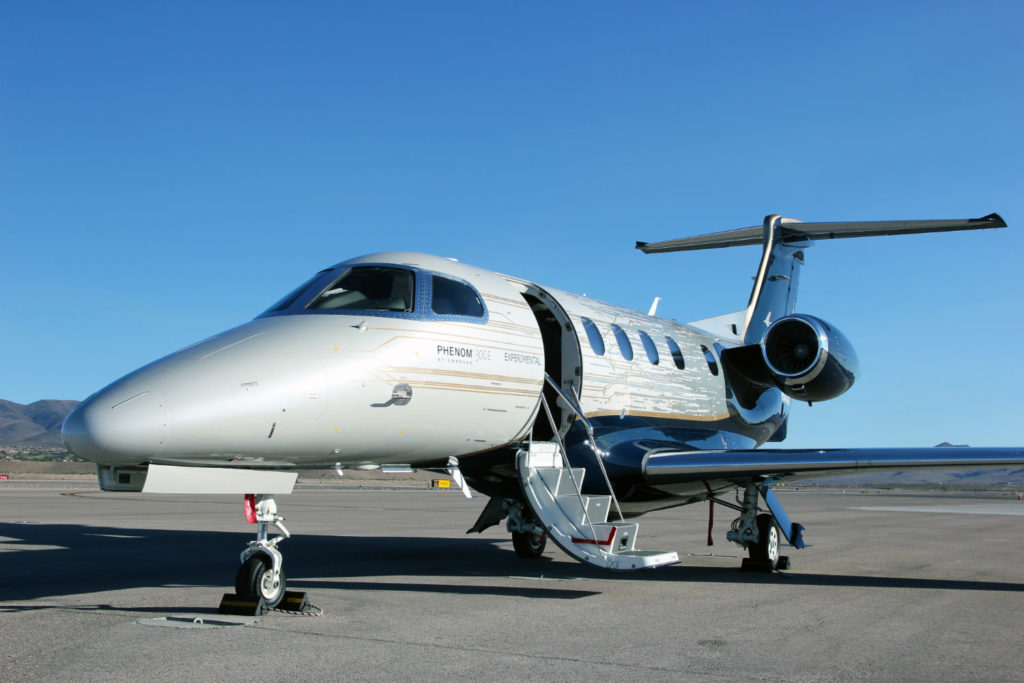
“We are very excited to introduce the Phenom 300E, which sets a new standard in value and customer experience,” said Michael Amalfitano, president and CEO, Embraer Executive Jets, in a news release.
“The Phenom 300E reflects our commitment to fascinate our customers. With a passion for excellence, our team has been working closely with customers to bring to market yet another beautifully designed and brilliantly engineered marvel of aviation.”
Originally launched in 2005, the Phenom 300 first entered the market in 2009. The Phenom 300 has been the most delivered business jet since 2013 with over 400 aircraft in close to 40 countries, Embraer said in the release.
Deliveries of the Phenom 300E will commence in the first quarter of 2018.
Enhancements for the Legacy 450 and Legacy 500 include readiness for the future air navigation system (FANS), as well as new internet connectivity and seating options.
In support of the Federal Aviation Administration’s NextGen investments to modernize the national aerospace system, Embraer is now offering customers of the Legacy 450 and Legacy 500 FANS 1/A+ technology, which allows datalink communications between pilots and air traffic control.
This optional feature is available to Legacy 450 and Legacy 500 customers now in the fourth quarter of 2017 and can also be incorporated into the existing fleet.
An additional enhancement in communications for the Legacy 450 and 500 is Gogo’s latest air-to-ground connectivity system, the AVANCE L5, which allows Embraer customers to benefit from higher internet speeds through access to 4G networks.
The AVANCE L5 system delivers data rates of up to 9.8 Mbps for downlink, covering the Continental U.S. and portions of Alaska and Canada. In the first quarter of 2018, this option will become available to Legacy 450 and Legacy 500 customers.
To round out the enhancements, the Embraer DNA Design introduces even greater comfort via an enhanced selection of Legacy 450 and Legacy 500 seating options.
Extensive customer interaction has generated improved ergonomics through design improvements to the leg rests, lumbar adjustments, heating and massage, and the addition of headrest wings.
The new seating options also offer customers more personalization options through new styles in stitching, leather material textures and color applications. These new seating options will become available to customers receiving aircraft in the second quarter of 2018.
Daher is exhibiting a 2017 model year version of the TBM 930 single-engine turboprop and promoting the TBM’s role as a fast, efficient corporate and charter aircraft.
“In the two years since we began promoting TBM-series aircraft for charter and for-hire applications, commercial operators’ interest in single-engine turboprops has steadily risen,” said Nicolas Chabbert, senior vice-president of the Daher Airplane Business Unit, in a release.

“Today, commercial flights represent a growing share of such aircraft movements when compared to light jets. We believed this is linked to the excellent performance-to-cost ratio of the single-engine turboprop aircraft and its increasing acceptance by the public.”
In the past two years, the fleet of commercially-operated TBMs has grown significantly, reaching 21 worldwide. In the United States, the number of Part 135-registered operators using TBMs currently totals 13, flying 16 TBMs across the U.S.–primarily the TBM 850 version.
Chabbert said Daher’s latest TBM aircraft–the TBM 910 and TBM 930 versions–respond to the key priorities of charter operators and their passengers: safe transportation, high-levels of service, and the savings of time and money.
NBAA-BACE is ranked as the sixth largest tradeshow in the United States and bills itself as the three most important days of business aviation in the year, bringing together current and prospective aircraft owners, manufacturers and customers in one meeting place to get critical work accomplished.
Indoor exhibits, an indoor static display of aircraft, and an outdoor static display, will be available for show attendees until Thursday afternoon.








